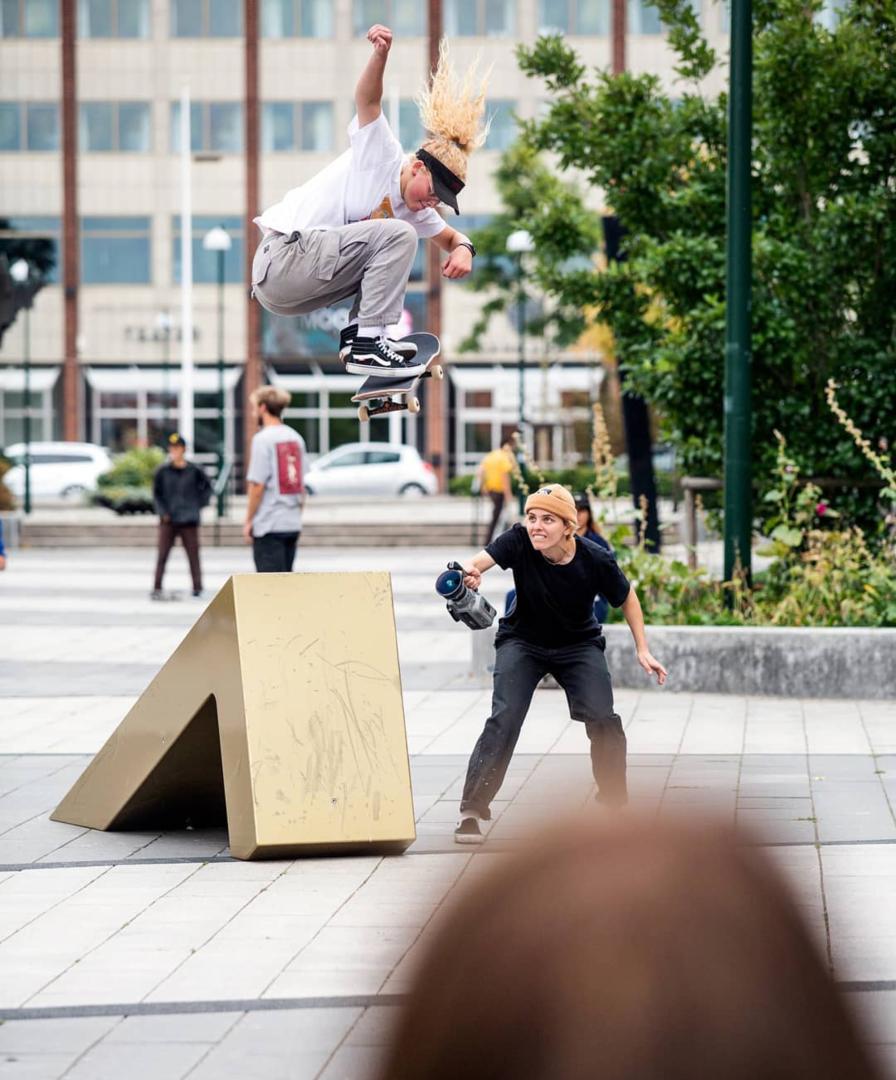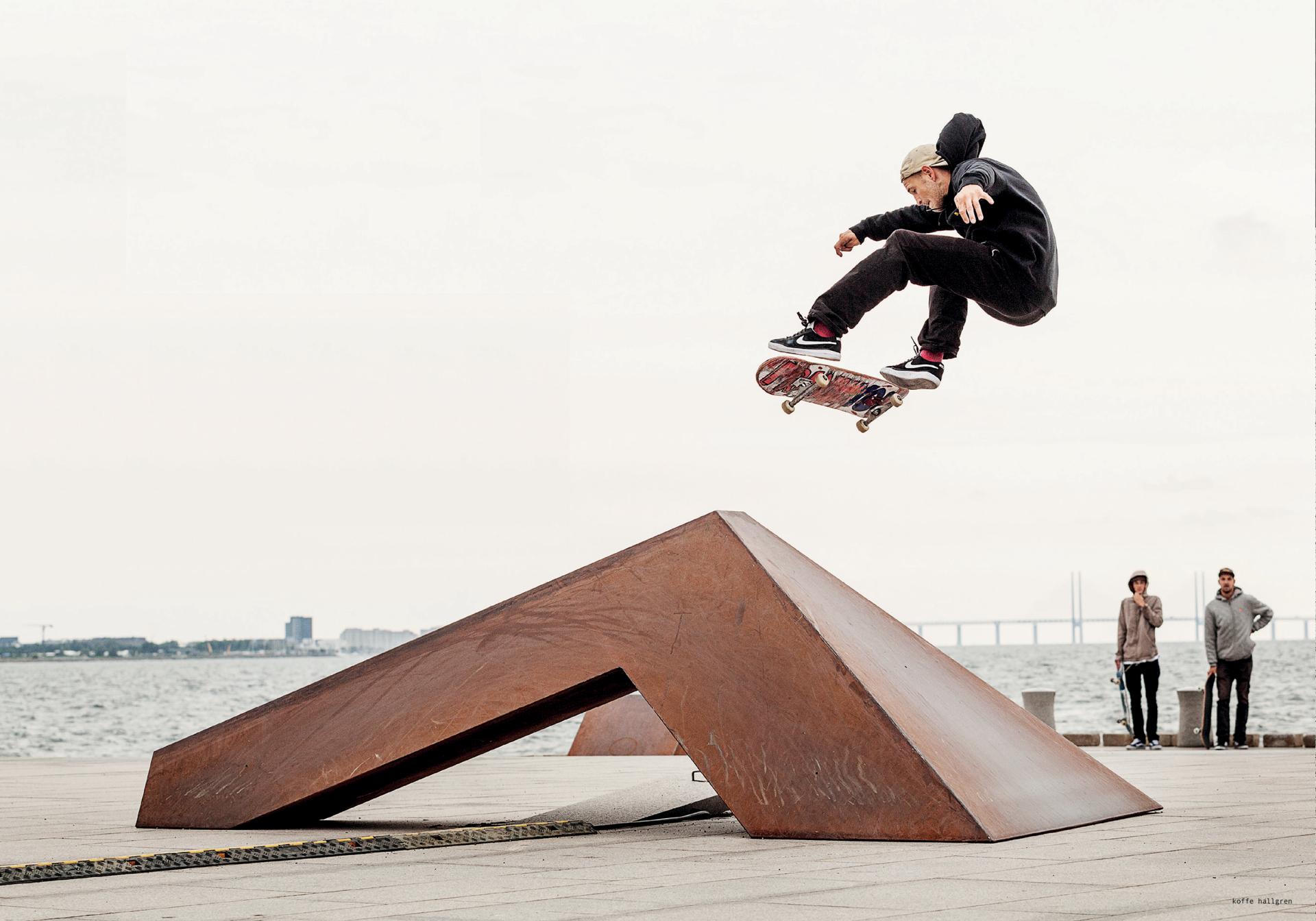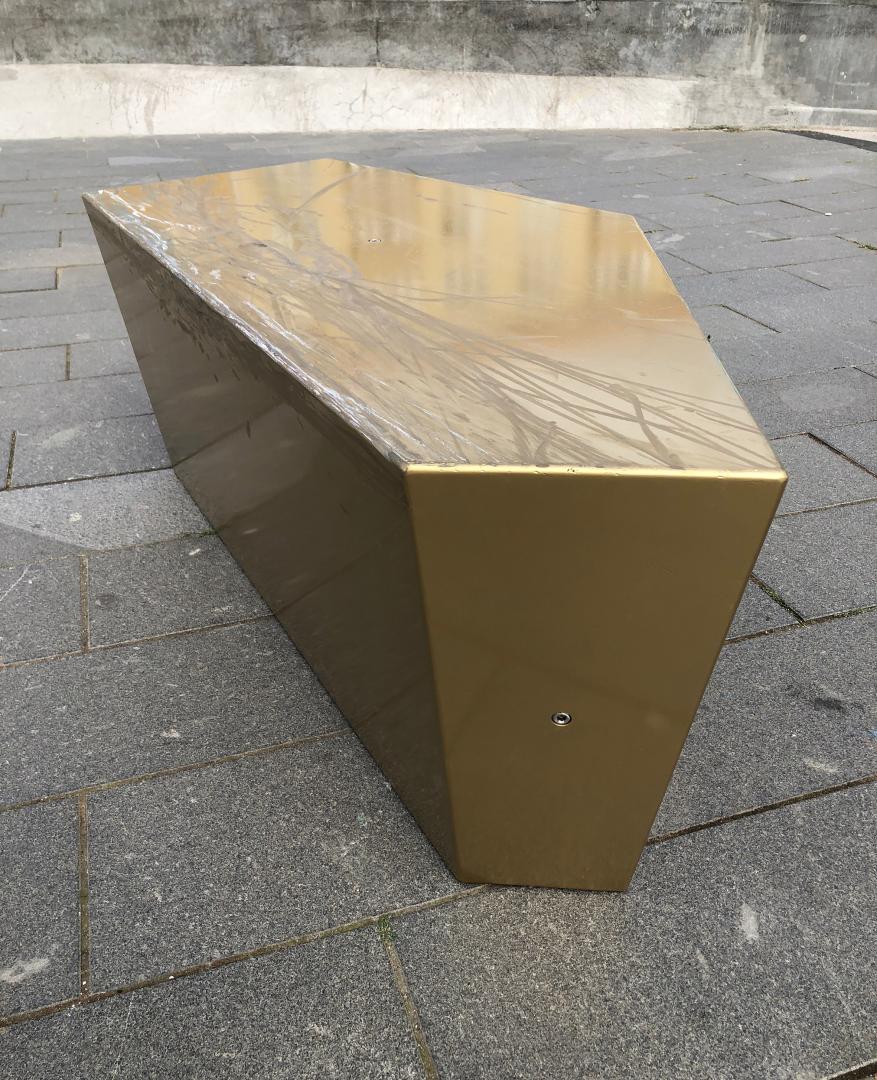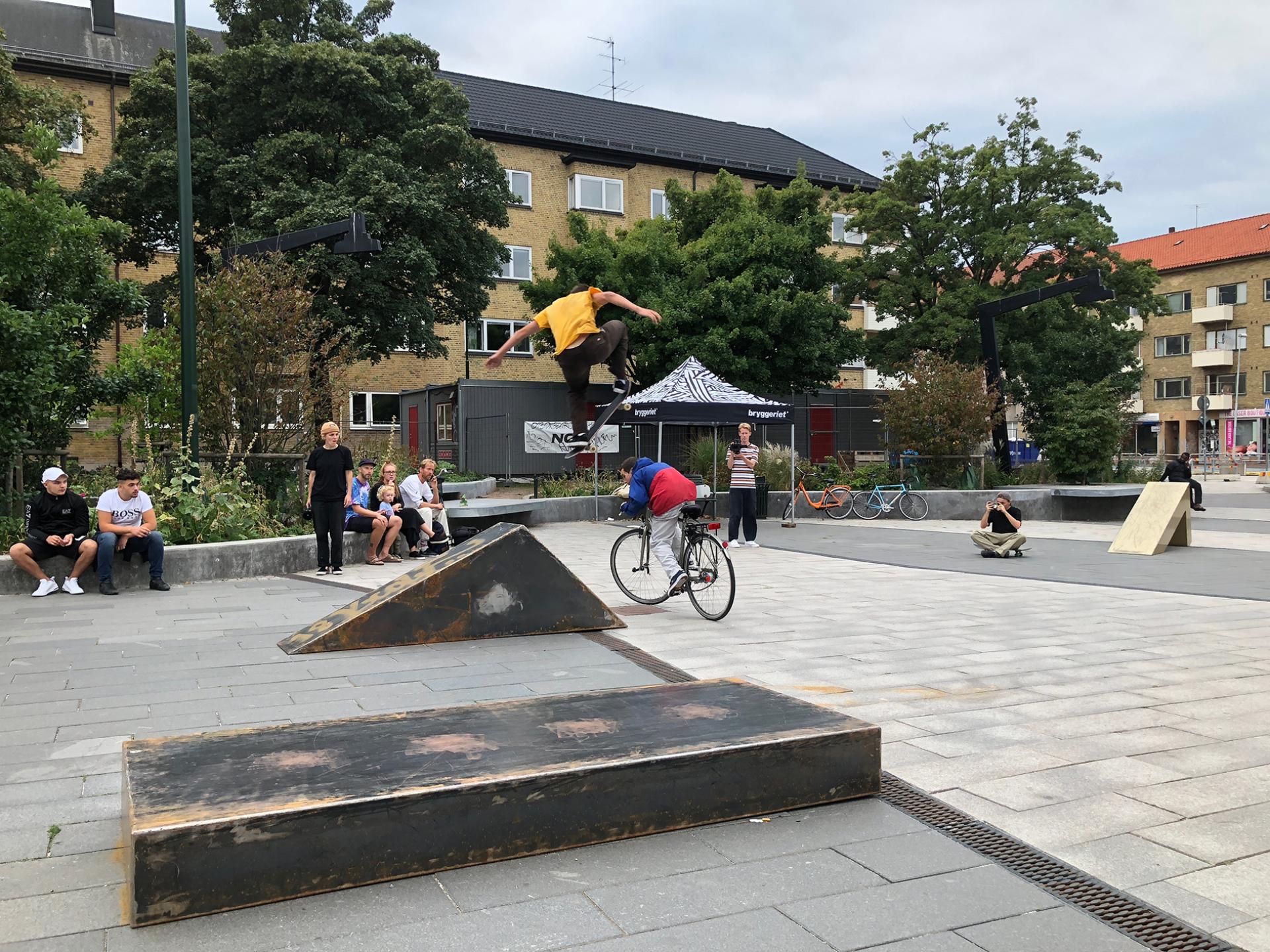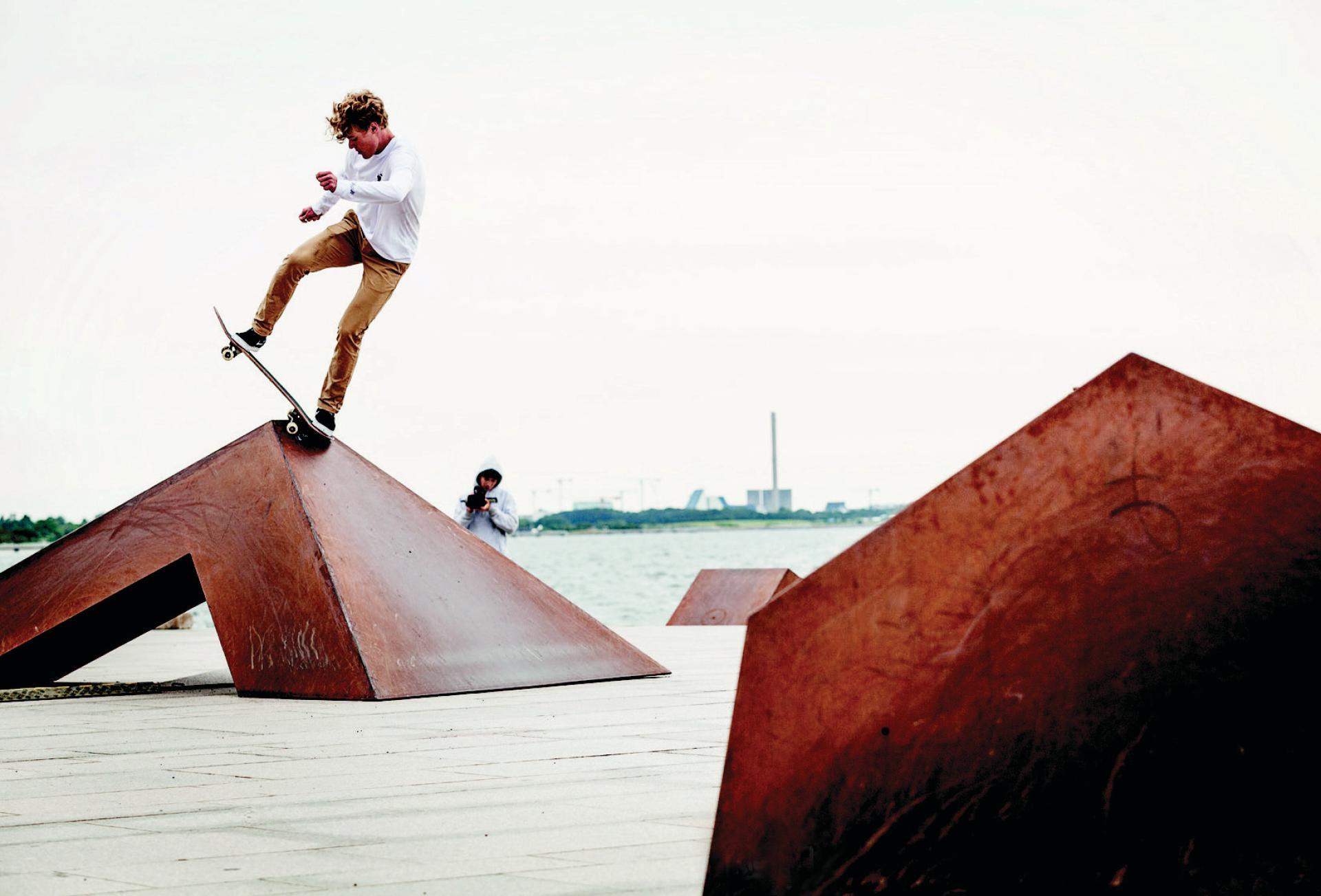We're all golden
Basic information
Project Title
Full project title
Category
Project Description
We’re All Golden is a series of multifunctional sculptures placed in disused public urban spaces in Malmö, Sweden, in order to regenerate interest in these social meeting points. The sculptures were designed from a perspective of inclusivity providing safe spaces to meet, skateboard and learn. The ideas behind the sculptures are based from an idea promote and embrace gender fluidity and LGBTQ+ movement within the culture of skateboarding, encouraging this attitude beyond this cultural bubble.
Project Region
EU Programme or fund
Description of the project
Summary
We’re All Golden is a series of multifunctional sculptures placed in disused public urban spaces in Malmö, Sweden, in order to regenerate interest in these social meeting points. The sculptures were designed from a perspective of inclusivity providing safe spaces to meet, skateboard, and learn. The sculptures promote and embrace subcultures focussing on the gender fluidity and LGBTQ+ movement within the culture of skateboarding, and aim to encourage this attitude beyond the cultural bubble of skateboarding. The sculptures are part of a larger collection that is moved around the city to regenerate/activate different parts each year.
We’re All Golden is a collection of five sculptures. Together the sculptures can be arranged in a variety of ways, each time providing surprising and dynamic flows through the public spaces of Malmö. We’re All Golden invites skateboarders as a primary target audience, however, the way the sculptures are designed also invites other visitors, as a place to rest, meet, climb and view the city through a new lens. The larger collection of sculptures that Malmö uses, originated in Berlin in 2013, as a series of modular sculptures based on ideas of inclusion of skateboarding within the city, steaming from the architecture movement that first appeared in London in 2004.
Malmö, as a city, is investing in regeneration to provide better housing and social spaces after the industrial collapse in the 80s (urbact.eu/malmC3B6). By enhancing the use of existing and new public space as a destination for physical literacy the spaces are also regenerated as safe spaces to pass or to engage with the city in a new way.
Key objectives for sustainability
Sustainability in this project is viewed as adding multifunctional sculptures into the built environment that lasts and can be re-used and re-appropriated time and time again. Even if the sculptures were to no longer enrich the urban environment, they could find a home in dedicated skate parks or sports facilities.
Because the works are added into an existing urban landscape there are virtually no impacts on the environment, the only one being transportation pollution from one place to the other. The key objectives are to work with existing areas and enhance them so the spaces get more engagement from various user groups, actually prolonging those spaces and making them more valuable to the local communities.
The material chosen for the sculptures is 5mm Corten Steel, Corten is a sustainable choice, with no maintenance required. Corten is not only made from pre and post-consumer recycled steel, it is 100% recyclable itself. The surface develops to a stable rust-like appearance that adds aesthetically and functionally to its use. Allowing the steel to rust makes the rust itself form a protective coating that slows the rate of future corrosion.
Key objectives for aesthetics and quality
There is a red thread in the works of Rich Holland. Rich creates spaces that will allow the creativity of the person’s engaging with these spaces to flourish. The sculptures designed for Malmö are authentic skate objects in the sense that they provide a nod to existing skateboard practices, but with a forward-looking twist. The objects can be placed in different configurations, as well as they themselves can shape-shift depending on what direction they are placed in. The objects allow for skaters of all abilities to be challenged and engaged, as well as providing interesting play objects for those without wheels, or indeed a resting place.
The collection of objects provides a stimulating creative canvas. The diffused edge between skateable forms and the public realm will identify skateboarding as a borderless activity. This new kind of hybrid zone is inviting for all users and will be a progressive approach to public space leaving a legacy for others to follow.
Key objectives for inclusion
The base key objectives on We're All Golden and the skatable architecture movement that Rich started in the early 2000s was to change the perception of what and how users engage with our public spaces and cities. From the initial movement that started in London with The Side Effects of Urethane, Rich has created works that stimulate skateboarding to be integrated into the built environment. We're All Golden added to this, but with a strong focus on on gender fluidity and LGBTQ+ movement within the culture of skateboarding.
Results in relation to category
The project has been placed in the category “Regenerated urban and rural spaces”, however, it could also be appropriate for the category “Reinvented places to meet and share”. The project has regenerated urban spaces within the city of Malmö in the following locations to date:
• Bagers Plats
• Scaniplattan
• Stapelbäddsparken
• Maritime University
• Folkets Park
• Konsthallstorget
• Värnhemstorget
• Nobeltorget
• Bordeaux – spread around.
In these locations it was seen by the city of Malmö that the urban environment found a new use and attracted local users from the surrounding area to engage with public space, the users were more local as the sculptures were being brought to them as opposed from the other way round. By placing the sculptures in these 'dead' urban spaces, in areas where there is no place to play including the local communities in placement, the communities became stronger and the activities grew through the enhanced spaces.
How Citizens benefit
The city of Malmö were the main funders of the project, under a long-running scheme called Skate Malmö. This was set up as a city-wide scheme to allow for skateboarding and other urban sports to happen in usually unused public spaces and to actively promote Malmö as a place to go skateboarding, within the fabric of the city.
Skate Malmö realized that there were many ‘dead’ urban spaces within the city which were originally designed as meeting/social area that needed additional elements to attract people to these places. By adding Richard Holland's multifunctional sculptures the citizens benefit by being given direct free access to sports/social equipment that normally would require them to travel too. It gives the spaces a purposed beyond what was initially planned for them, making the users see them in a new light as a place for them to be within the public space of the city.
Innovative character
This work adds upon a series of skateboard focused multifunctional sculptures and temporary architectural landscapes that have been implemented in various public spaces and galleries across Europe aimed at re-inventing the use of the built environment to included Olympic sports, promote physical literacy and inclusivity, creating a more dynamic and lively built environment for all ages, genders, and users.
This application would like to include the new permanent skateboard landscape that is currently being built in Hilversum with a completion date of summer 2021 with the same focus, also theorized and designed by F31/Rich Holland the instigator of this new paradigm within architecture, first seen in London in 2004.

